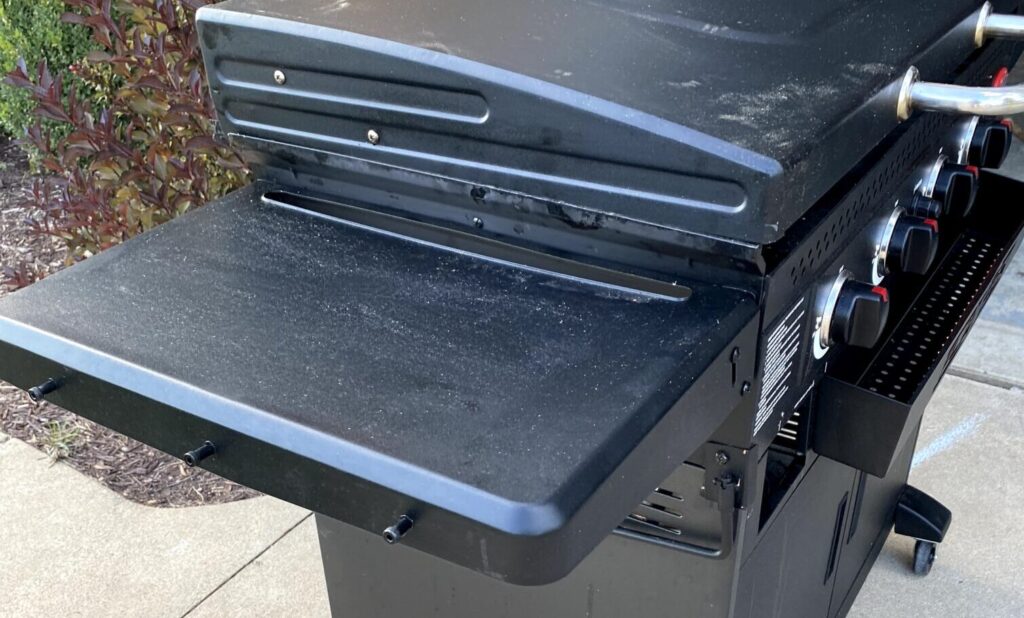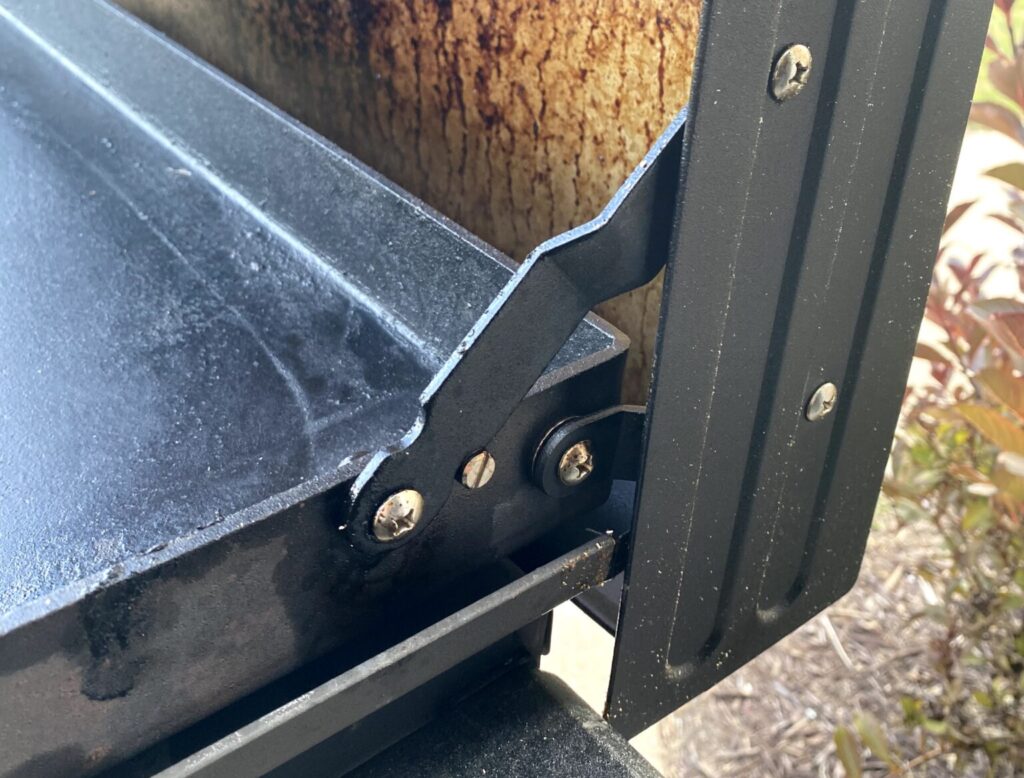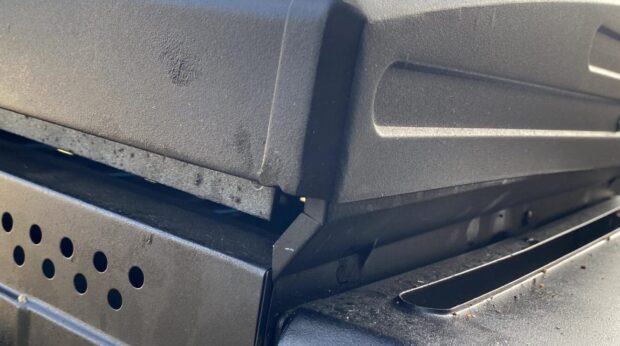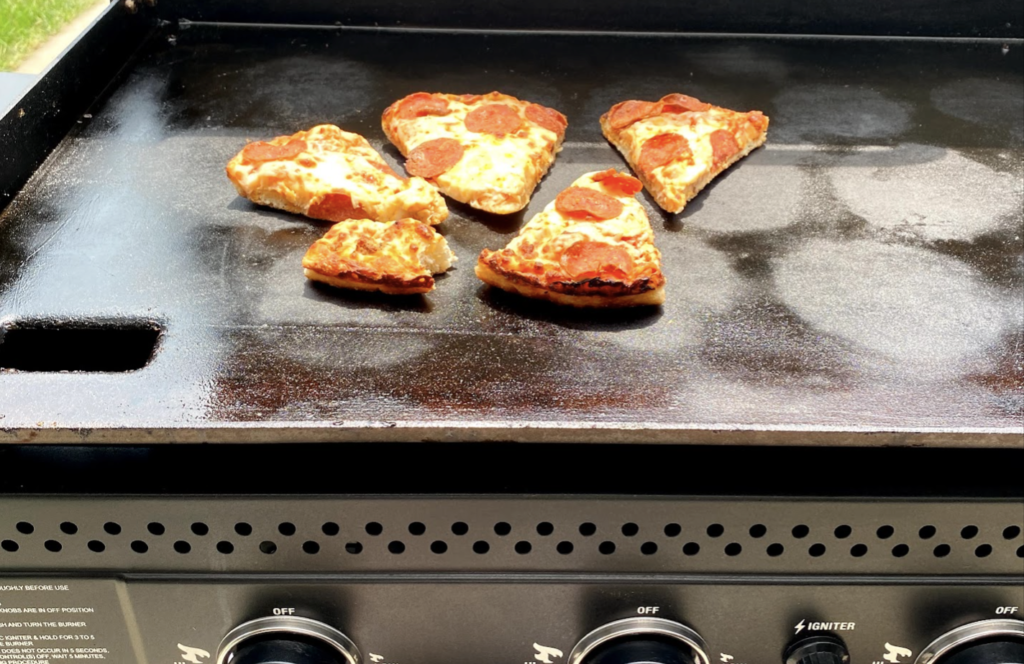If all goes well, you will be spending a lot of time with your griddle. With a few nuggets of wisdom in your back pocket, you can find a griddle you will love, and that will last you a long time. Every grill or griddle manufacturer has to make compromises in order to sell their product at the price consumers are generally willing to pay for grills and griddles. The less you pay for a griddle, the more likely one or more of these things can become an issue. I’d recommend either getting your hands on the griddle your’e thinking about buying to actually touch and feel it, or taking the advice of a trusted friend.

In this article, I’m going to reflect on my experiences with three units:
- Char-Griller Flat Iron 36″ griddle
- Blackstone 28″
- Pit-Boss 850 Pro II Pellet Grill/Smoker (I know it’s not a griddle, but it’s constructed similarly, and has similar design challenges to solve)
Here are the things you should pay attention to:
1. Sheet Metal thickness, and structure
Sheet metal is the main way manufacturers construct the body of the griddle. This can be a positive or negative based on the design choices they’ve made. Sheet metal can be very strong when reinforced properly. It can be pleasant to handle, and totally adequate for the purpose of holding up a very heave piece of cold rolled steel:
First take a look at where you will be handling the griddle to move it. On my char-griller, the wheels aren’t very good, which makes it difficult to move. They didn’t build any handles into the griddle for the purpose of moving it. Therefore, I have to hold onto the side tables to push it in and out of my garage for use. Every time I do this, I can feel the sides flex, and the shelves bend up a touch. It’s thin enough to bend back, but you know that flex is going to weaken the metal, and eventually screws are going to start pulling through.

Secondly, the shelf I have to grip to move it has a hole cut out near the griddle that seems like they intended that to be used as a handle to pull it, but the metal is so thin that its very uncomfortable because it cuts into my hand (not literally cutting it, but making a crease, you know?)

Contrast this with my pit-boss smoker, it has a handle fashioned specifically made for moving the unit. They didn’t just present a piece of sheet metal, but instead folded a hefty square tube of metal and wrapped it at the edge of the unit so you’re using it to lift and move the heaviest part. This is critical for that unit, because it’s VERY heavy since it’s made with thick steel instead of flimsy sheet metal. But it highlighted the reality that the griddle could have a handle strong enough to move the unit.

The 28″ Blackstone has a tubular handle which is used to move the unit. Amazing. In addition to that, the shelf is thick enough metal, and strong enough to be used to push the unit without any flex. If you take a look at the 36″ models you’ll see they’ve made the shelves very deep, and I think that’s partly to add structure so that they are rigid and capable of being used to push it.
Then look at the internals. When you remove the top to maintain the unit, are your hands in danger because of the thinness of the edges? Does it have doors, and do they bend and flex easily? Again, char-griller’s flat-iron has thin sheet metal, and its not confidence inspiring. The Blackstone’s thicker sheet metal is thicker, and the edges seem to be more rounded.
Third, check out the base. Do the castors connect in a way that puts the weight directly down from the frame into the wheels? My Char-Griller does not, and the thin sheet metal did not support the wheels as I try to push it in and out of the garage. I’ve actually replaced the castors and added some support to make this work better because those connections are so bad in the thin sheet metal. I’m not sure thick sheet metal would have lasted much longer, it’s just a bad design decision.


The big loser in this category: The Char-Griller. Not surprising for what I paid for it. I think it was around $400, and it had a lot of great features. You can tell those features came at a cost, and I’m still not sure I am happy with that compromise.
2. The Right Features
When I upgraded to the Char-Griller 36″ Flat-Iron model, there were a few stand-out features that I consider to be game changers now that I’ve had a summer of operation with it.
In every model of griddle, there tends to be extra fluff here and there. The best you can do is pick the model with the right compromises. It’s hard to believe there isn’t a “perfect” griddle out there yet.
First, look for a model with a lid that hinges. It won’t hinge exactly like a propane grill, it will likely have an articulating, double arm mount because of the constraints of swinging back over the top and staying rigid. I love the lid on the Char-Griller. It has been a major benefit to my cooking, and to keeping a clean surface. It provides a decent amount of heat retention which helps with pre-heating, as well as with steaming up your food.

Second, find something with wind-guards. I’m not sure why Blackstone hasn’t gotten in on the wind-guard game. Maybe there’s a patent out there preventing them. It’s a darn shame. As a consolation prize from them, they offer an add-on wind guard. The integrated wind guard on the Char-Griller was a huge improvement for me, and the main reason I chose the it as a replacement for my smaller Blackstone griddle. The Char-Griller wind guard wraps up and overlaps the sides of the steel top. This effectively blocks all wind, and makes for a MUCH quicker pre-heat, and more consistent heat retention. I can tell you from experience that it really works, and its worth it.

Third, the “condiment tray” on the front of the Char-Griller is awesome. Somehow they’ve managed to block most of the heat from reaching the front-apron tray, which means you can keep plastic bottles there without melting them. I’ve melted a few bottles on the Blackstone getting them too close to the grill top on the side-tray. Another benefit of the wind-guards is they shield the side trays from heat! The front tray is even cooler, it keeps the oil, water, liquid smoke, etc at a nice reasonable temp, and right at hand to be used when you need it.

3. Grease Management
Each griddle manufacturer has to make the difficult choice of what grease management option to use.
First try to find something with a grease trap in the rear. Blackstone seems to have patented the rear grease trap. In my opinion, that’s the best, and offers the optimal movements and direction for cleanup.

Second, if you can’t get that, go for the square hole in the top, near the front. It’s not ideal, because some of the movements you have to do to bring the grease to the trap with a spatula are in danger of bringing the grease to YOU! I am always paying attention to the direction and flow of the grease on my Char-Griller. The grease hole square is front-left. It works. It’s fine. You can’t cook in that corner. I don’t love it, and it even has the added downside of having the trap-way mis aligned with the actual bucket so grease has gotten further down the cabinet and into the wheels. YUK.

Avoid at all costs: The front grease gutter. All the worst parts are present here. For one, you are DEFINITELY bringing grease and crud dangerously close to the edge. My in-laws have a griddle with this grease management strategy. Other than that it’s a beautiful griddle. The worst is that there is a small hole at the end for the grease to flow through, and that gets clogged. The horror!!!

Recommendations:
- If you have the money, stick with Blackstone 36″ with hood from Lowes. Why there is a different model at every store beats me, but this one is the best blend of features and price I’ve seen. There’s no wind guard, but you get an attached lid, front condiment tray, solid construction, good wheels, rear-grease management, and the company is awesome.
- If you can’t find the Blackstone, or you live in a windy place, see if you can find the 36″ Char-Griller with wind guard and lid. Sure, the sheet metal is flimsy, and you’ll wonder how long it’ll last. But as a first-entry into the world of griddles, it’d be hard to beat the flat-iron for the features it provides. Menards often runs an 11% rebate, so you can pick it up for around $360 if you factor that in (which I don’t… I’m so bad at the rebates).
- And the best option of all is to go and explore! go out to Lowes, Tractor Supply, Home Depot, Or whatever local store is selling griddles right now. Look at the features I talked about in this post, and figure out what makes the most sense from what’s available for you today. I certainly have not gotten my hands on every brand of griddle. I’m attempting to work my way into more of them, so that I can compare and contrast with more knowledge, and fewer assumptions.
